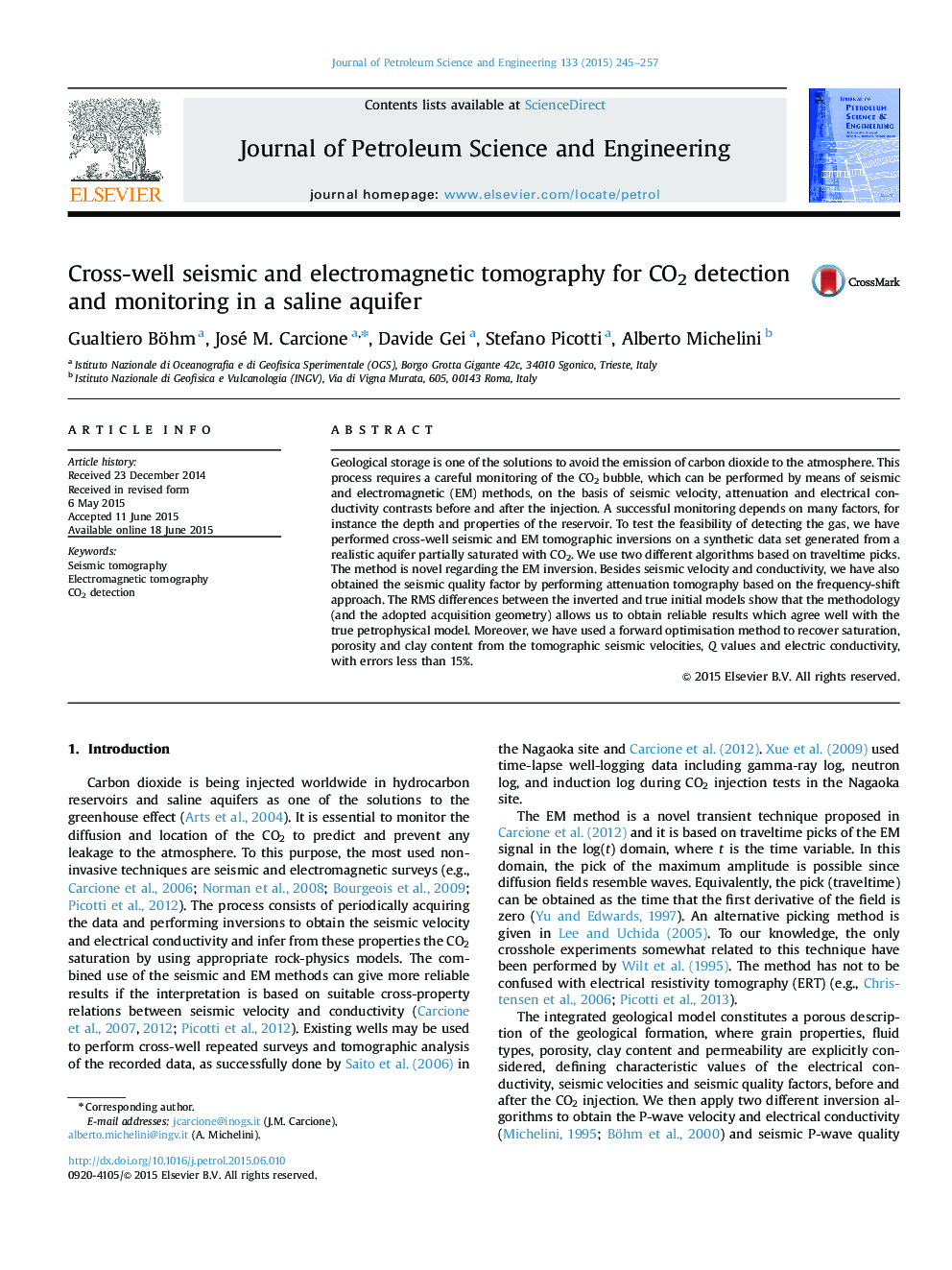| Article ID | Journal | Published Year | Pages | File Type |
|---|---|---|---|---|
| 1754717 | Journal of Petroleum Science and Engineering | 2015 | 13 Pages |
Abstract
Geological storage is one of the solutions to avoid the emission of carbon dioxide to the atmosphere. This process requires a careful monitoring of the CO2 bubble, which can be performed by means of seismic and electromagnetic (EM) methods, on the basis of seismic velocity, attenuation and electrical conductivity contrasts before and after the injection. A successful monitoring depends on many factors, for instance the depth and properties of the reservoir. To test the feasibility of detecting the gas, we have performed cross-well seismic and EM tomographic inversions on a synthetic data set generated from a realistic aquifer partially saturated with CO2. We use two different algorithms based on traveltime picks. The method is novel regarding the EM inversion. Besides seismic velocity and conductivity, we have also obtained the seismic quality factor by performing attenuation tomography based on the frequency-shift approach. The RMS differences between the inverted and true initial models show that the methodology (and the adopted acquisition geometry) allows us to obtain reliable results which agree well with the true petrophysical model. Moreover, we have used a forward optimisation method to recover saturation, porosity and clay content from the tomographic seismic velocities, Q values and electric conductivity, with errors less than 15%.
Related Topics
Physical Sciences and Engineering
Earth and Planetary Sciences
Economic Geology
Authors
Gualtiero Böhm, José M. Carcione, Davide Gei, Stefano Picotti, Alberto Michelini,
